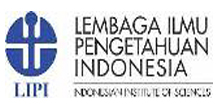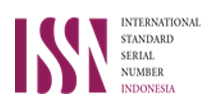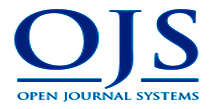PENGARUH GURU SEBAGAI ROLE MODEL TERHADAP MOTIVASI PENERAPAN PHBS SISWA DI SMP FRATER PAREPARE
Abstract
Guru sebagai salah satu role model dalam penerapan Perilaku Hidup Bersih dan Sehat (PHBS) memiliki multi fungsi, tidak terbatas hanya sebagai ‘pengajar’ yang melakukan transfer pengetahuan, tetapi juga bisa menjadikan dirinya sebagai role model bagi siswa yang dapat menampilkan kepribadian yang mampu manjadi teladan bagi siswa (Pakpahan, 2001). Penelitian ini bertujuan untuk: (1) mendapatkan gambaran empiris tentang pengaruh guru sebagai role model dengan motivasi penerapan PHBS siswa, (2) mengetahui motivasi belajar ‘meniru’ penerapan PHBS siswa dan (3) menganalisis seberapa besar pengaruh hubungan antara guru sebagai role model dengan motivasi penerapan PHBS siswa dalam memelihara kesehatan lingkungan sekolah. Penelitian ini merupakan studi deskriptif dengan teknik pengambilan sampel stratified random sampling non test dari populasi 61 siswa kelas III SMP Frater Parepare tahun ajaran 2018/2019 dengan sampel sebanyak 32 responden di yang didapat dari rumus penentuan sampel menurut Winarno (1994:100). Pengambilan data dilakukan dengan menggunakan metode angket. Data dianalisis dengan menggunakan pendekatan statistik parametrik, yaitu uji hubungan dua variable yang mempunyai hubungan (V.Wiratna Sujarweni, 2014). Hasil penelitian menunjukkan bahwa sebanyak 25 siswa (78,1%) dari 32 reponden yang mengatakan bahwa guru berpengaruh sebagai role model dan yang tidak berpengaruh sebanyak 7 siswa (21,9%). Hasil penelitian motivasi menerapkan PHBS siswa di SMP Frater karena belajar meniru keteladanan guru sebanyak 26 orang (81,3%) dan tidak belajar meniru sebanyak 6 orang (18,7%). Sedangkan hasil analisis statistik inferensial dengan regresi terhadap pengaruh guru sebagai role model melalui pendekatan statistik parametric, maka diperoleh kesimpulan bahwa terdapat pengaruh yang signifikan antara guru sebagai role model terhadap motivasi penerapan PHBS siswa di SMP Frater Parepare dengan nilai p = 0,001 untuk α = 0,05. Itu berati nilai R square adalah 0,001 adalah pengkuatdratan dari koefisien korelasi atau nilai R (0,032 x 0,032 = 0,001). R square dapat disebut koefisien determinasi yang dalam hal ini berarti 0,01%, maka motivasi meniru siswa dipengaruhi oleh keteladanan Guru sebagai role model sebesar 0,01%, selebihnya dipengaruhi oleh faktor lain. Kesimpulan bahwa pengaruh guru sebagai role model dan kesadaran meniru siswa terhadap motivasi penerapan PHBS di SMP Frater masih rendah. Saran dari peneliti adalah diperlukan suatu upaya keberanian guru dalam menunjukkan keteladanan yang berkesinambungan terhadap penerapan PHBS di lingkungan sekolah agar siswa kontinyu belajar meniru.
ABSTRACT
The teachers as one of the role models in the application of Clean and Healthy Life Behavior (PHBS) has multiple functions, not only as ‘teachers’ who carry out knowledge transfer, but also make themselves as role models for students who can display a personality that can become a role models for students (Pakpahan, 2001). This study aims to: (1) get an empirical description of the teachers as role models with motivation to apply students PHBS action, (2) knowing motivation to learn ’to imitate’ the application of students PHBS action, (3) to analyze how much the influence between teachers as role models with the motivation of applaying studen’t PHBS in maintaining the the health of the school environment. This research is a descriptive study with a non-test stratified random sampling technique from a population of 61 third grade junior high school students in Parepare 2018/2019 with the amont sample of 32 respondents obtained from Winarno’s (1994:100). Statistical approach wich is a test of the relationships between two variables that have a relationship (V.Wiratna, 2014). The result of the study showed that as many as 25 students (78.1%) from 32 respondents said that the influential teacher as many as 7 students (21.9%). The results of research on motivation to applay PHBS students in senior high school because learning to imitate the example of the teacher as many as 26 people (81.3%) and not learning to imitate as many as 6 people (18.7%). While the results of inter ferential statistical approach, then conclude that there is a significant influence between the teacher as a role model to motivate the application of PHBS action in Frater Junior High School of Parepare with a value p = 0.001 for α = 0.05. That means the value of R square is 0.001 is strengthening of the correlation coefficient or R value (0.032 x 0.032 = 0.001). R square can be called the coefficient of determination which in this case means 0.01%, then the motivation to imitate students is influenced by the example of the teacher as a role model of 0.01%, the rest is influenced by other factors. The conclusion that the influence of the teacher as a role model and awareness of imitating students towards the motivation of the application of PHBS in the Middle School Brother is still low. Suggestions from researchers are needed an effort to courage the teacher in demonstrating a sustainable example of the application of PHBS in the school environment so that students continually learn to imitate.
Keywords: Teachers as role models, Motivation for learning to imitate students and Application of PHBS at school.
Keywords
Full Text:
PDFReferences
Bashir, S., 2014, Teacher as A Role Model and Its Impact on the Life of Female Students. International Journal of Research – Granthaalayah, [Shakila et al.*, Vol.1 (Iss.1): August, 2014] ISSN- 2350- 0530, diakses 8/4/2018.
Mahfudz Adznan Muhammad dkk, 2013, Faktor-Faktor yang Berhubungan dengan Praktik Perilaku Hidup Bersih dan Sehat (PHBS) pada Siswa SD Negeri Kedungmundu Semarang,
https://www.google.co.id/jurma. unimus.ac.id/index.php/perawat/article / view/214, diakses 10/4/2018.
Pakpahan Masniari Lyn Parlina, 2001, Hubungan Antara Karakteristik Kepribadian Guru dalam PBM dengan Potivasi Belajar Siswa, Skripsi Sarjana pada Jurusan PPB FIP UPI Bandung (tidak diterbitkan), https://irpan1990.wordpress.com/pendekatan-guru-dalam-proses, diakses 10/4/2018.
Sudjana Nana, 2000, Metode Statistik, Bandung: Tarsito.
Surakhmad Winarno, 1994, Pengantar Penelitian Ilmiah, Bandung: Tarsito.
V.Wiratna Sujarweni, 2014, Metodologi Penelitian Keperawatan, Yogyakarta: Gava Media.
Refbacks
- There are currently no refbacks.










